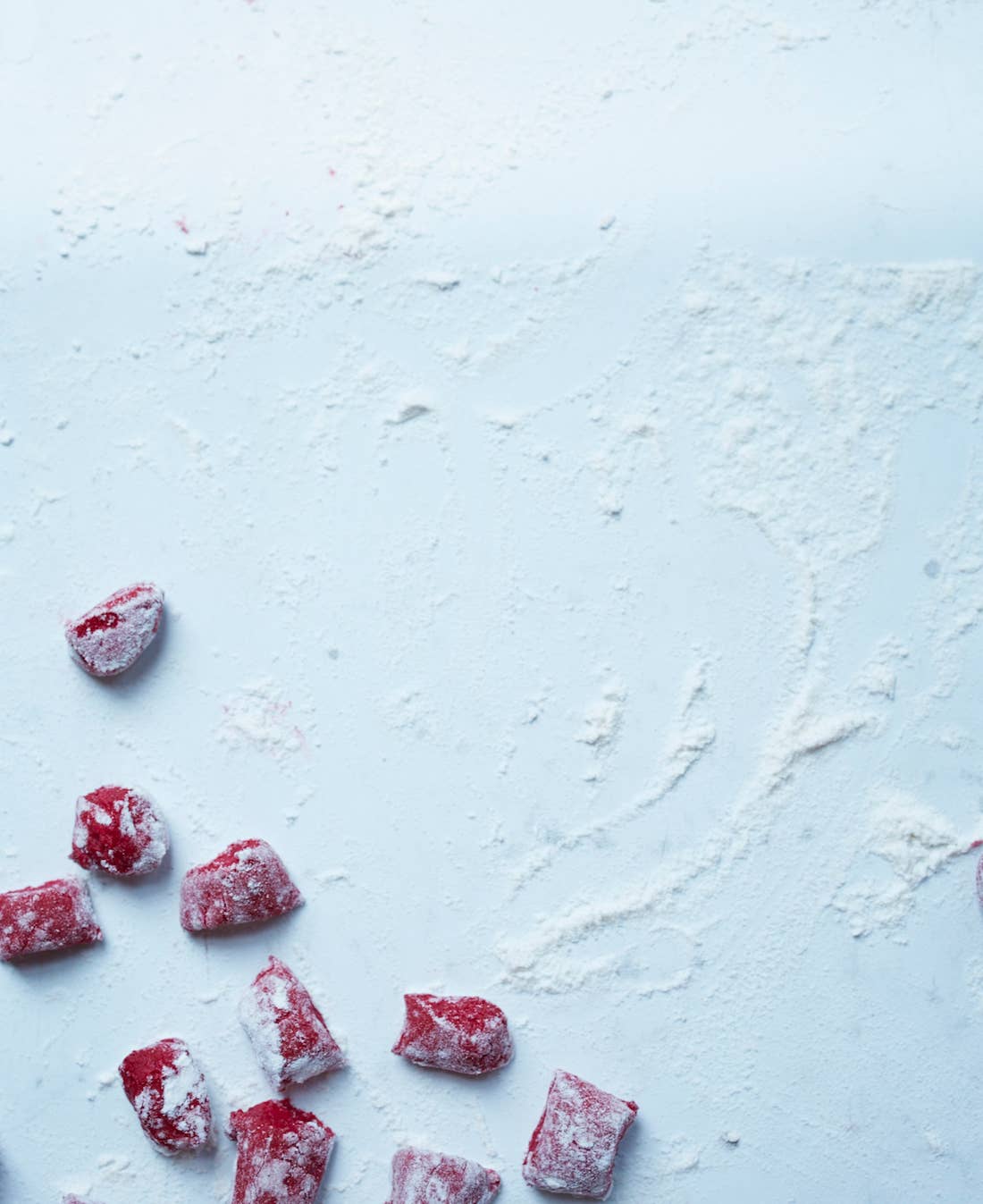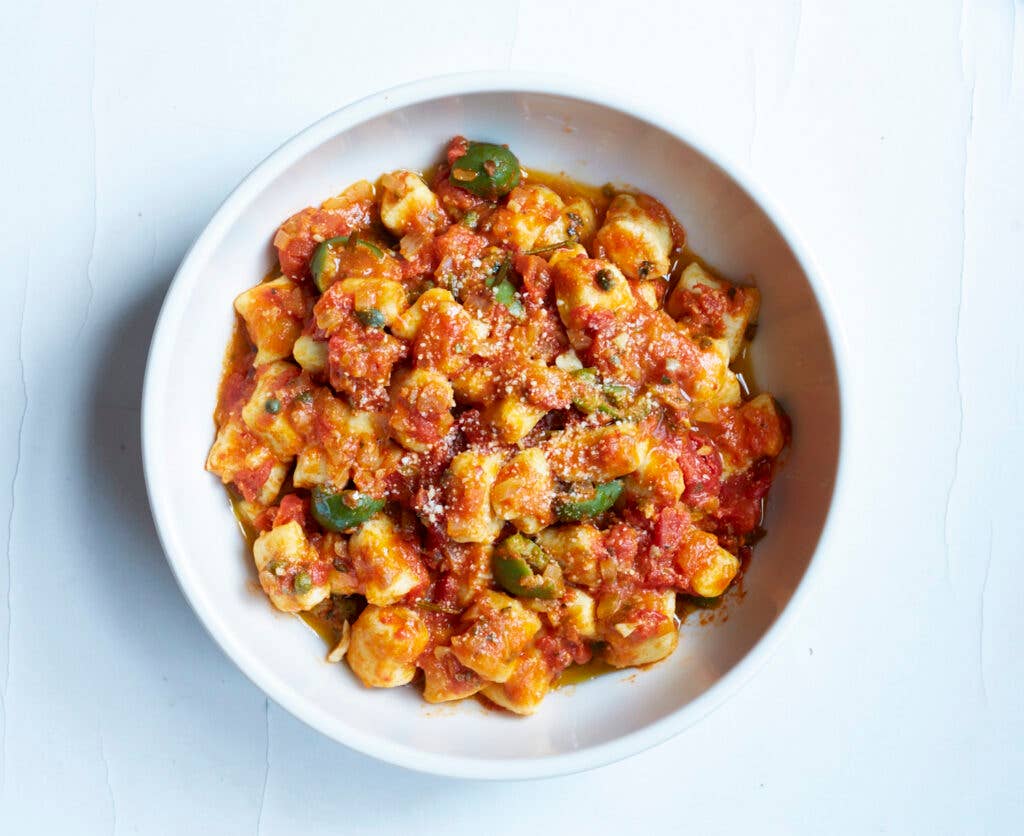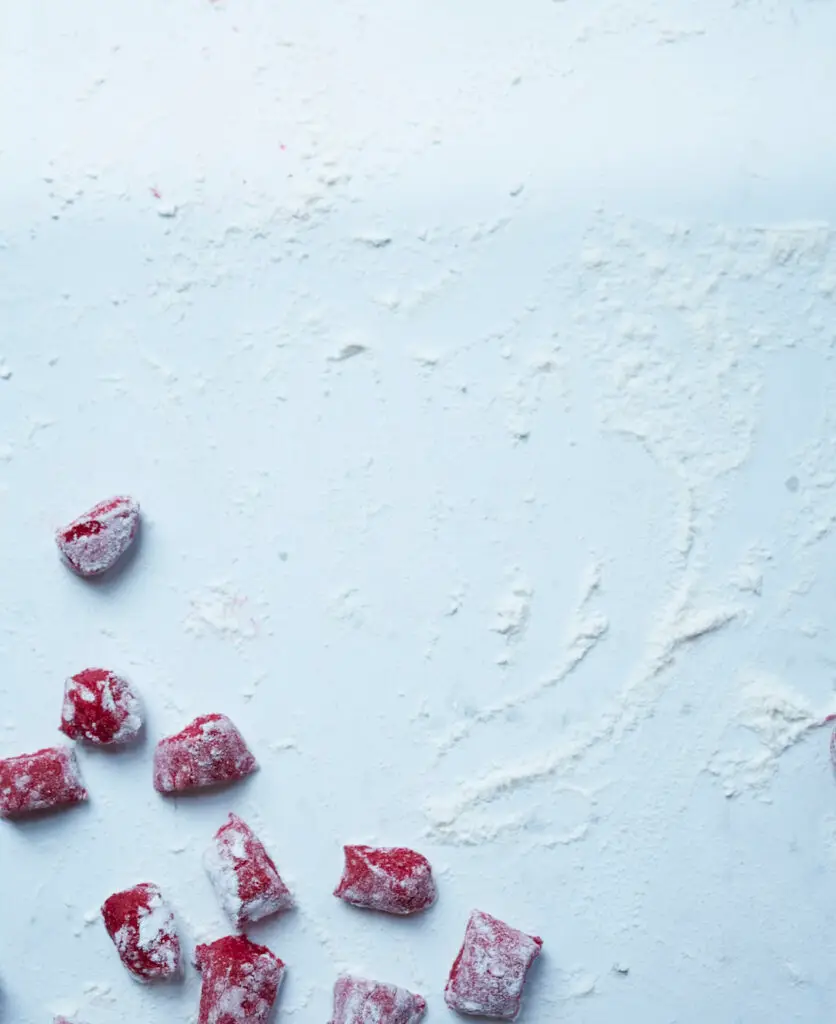

There are many regions that lay claim to the origins of gnocchi. While they are generally associated with northern Italy, the truth is that these dumplings are found all over the peninsula and in many diverse forms, made with a variety of base ingredients depending on where they come from: flour, corn meal, semolina, bread, chestnut flour, ricotta, or vegetables—from pumpkin to spinach to the classic potato.
The word gnocchi is thought to come from nocca, which means knuckles, or from the Lombard word knohha, which means knot (such as wood knot) or walnut—all words that imply the small, tight, rounded shape of gnocchi that we know today.
The most famous potato gnocchi that are known and loved world-wide date back to the sixteenth or, more likely, seventeenth century—well after Spanish explorers brought potatoes from South America and introduced them to Italian kitchens.
But other forms of gnocchi have been around since the Renaissance (and likely much earlier), as the sort of elegant dish you might find on banquet tables for important occasions. In fifteenth century Lombardy, gnocchi made of bread, milk, and ground almonds were called zanzarelli. In his 1570 cookbook, Bartolomeo Scappi has a recipe for "gnocchi" made from a dough of flour and breadcrumbs mixed with water and pushed through the holes of a cheese grater. A little later, egg, flour, and water were introduced to the recipe, which became known as malfatti. The word means "badly made" and is still the name that Tuscans apply to their spinach and ricotta dumplings, gnudi.

In the nineteenth century, Pellegrino Artusi, the "grandfather" of Italian cuisine, published a recipe for potato gnocchi prepared in exactly the same way that we see today, complete with the story of a woman whose gnocchi disappeared in the pot she was boiling them in—because she hadn't used enough flour to hold them together. He first shapes his gnocchi into pinky-sized pieces and then rolls them against the back of a cheese grater for texture. That texture, whether created by rolling gnocchi with the tines of a fork or with a special wooden implement, help give the otherwise smooth dumplings little nooks and crannies where sauce can hide, and guarantee full flavor with every bite.
Every region in Italy, especially in the north, has its own gnocchi variation and its own specific sauce or serving style. In Piedmont or Lombardy, you might find potato gnocchi tossed in a simple dressing of butter and Parmesan, or in a creamy, cheesy sauce passed under a grill to brown the top before serving. In Verona, potato gnocchi is traditionally served in a tomato sauce—it’s a dish associated with Carnival that goes as far back as the 1500s.
In Venice, gnocchi is also known as "macaroni." Made from a base of flour, milk, and eggs cooked and shaped into little discs, they are baked in the oven with butter and cheese. It's an almost identical preparation to Lazio's famous gnocchi alla romana: round, flat discs of cooked and cooled semolina. Still further south, on the coast of Sorrento, a Sunday lunch typically includes potato gnocchi baked in the oven with a bright tomato sauce, fresh mozzarella and basil: gnocchi alla sorrentina.
The gnocchi family is numerous, to paraphrase Artusi, and when you look at the extended family tree, you see that in many ways, these recipes—the early bread-and-flour versions in particular—are the predecessors of pasta. But even moreso than pasta, this humble and beloved preparation has largely remained a homemade one, keeping the Italy’s traditions safe in the kitchen.
Keep Reading
Continue to Next Story










